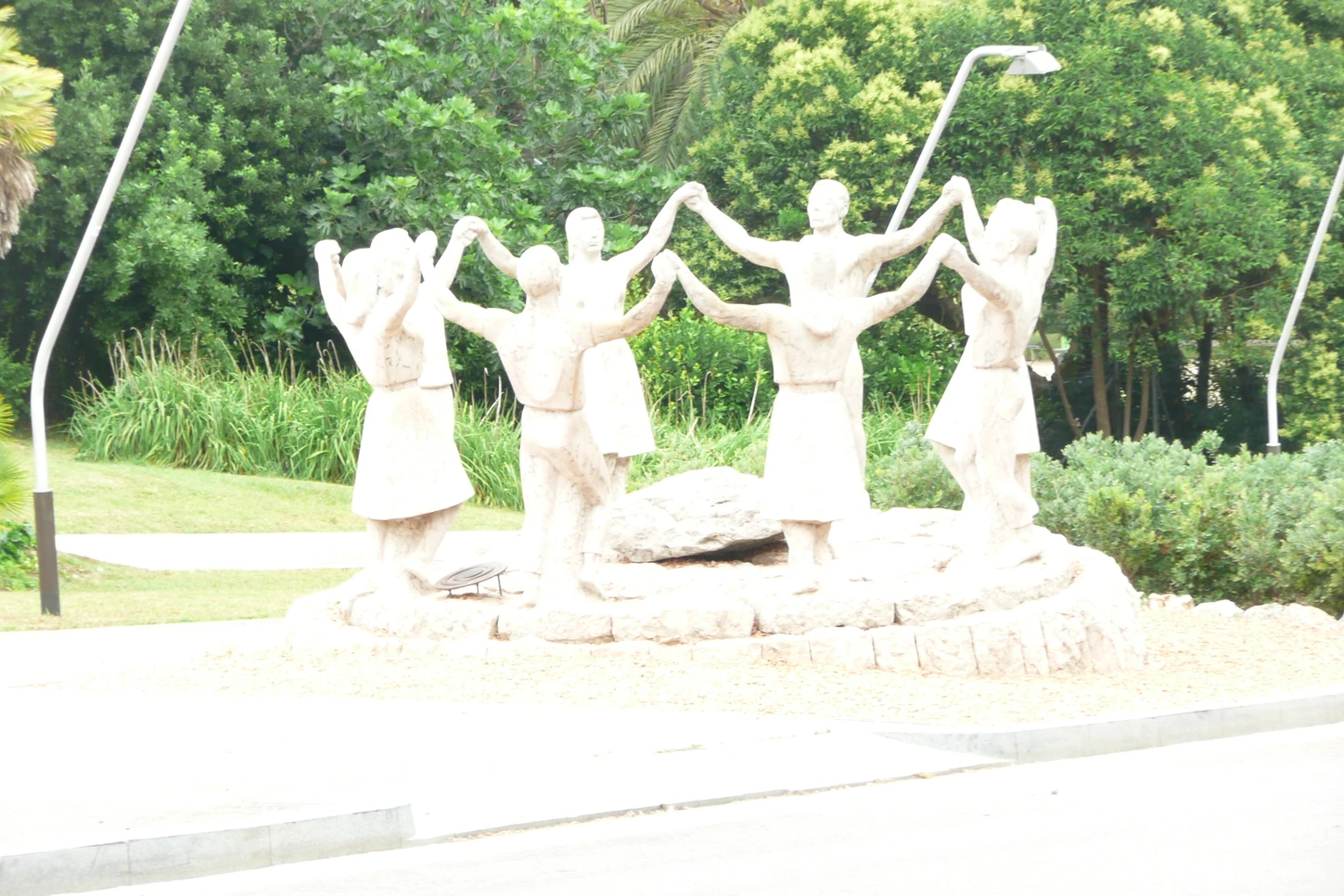Bon Dia, Barcelona!
- AMCL Schatz

- Feb 20, 2023
- 5 min read
"Bon dia!"
This is the official greeting in Catalan, as opposed to the Castillan phrase, "Buenas dias," that I learned from my Spanish class and often use to greet Spanish and Hispanic friends. In Barcelona, it is quite handy to know a few Catalan expressions, especially when speaking with the locals.
Barcelona, the capital city of Catalonia, is a large metropolis. My first impressions as we drove along the busy streets of its many districts could be summed up into a few words that one does not usually group together – vibrant, cosmopolitan, sandy beaches, green parks on hills, exotic flora and fauna, Gothic architecture, modern skyscrapers, whimsical art, food adventure, and all-night-long parties. But in this city that faces the Mediterranean on one side and the Pyrenees mountains on the other, the hodge-podge of contrasting elements seem to blend seamlessly.
Our bus did a grand tour of its famous districts – the old town of Ciutat Vella that features the distinct medieval architecture of the Barri Gotic neighborhood (where our guide also pointed at the Contemporary Art Museum of Barcelona in Raval, as well as the Naval Museum at the very end of Las Ramblas); the modernist quarter of Eixample with its square blocks and imposing contemporary-style buildings; the quieter district of Gracia which used to be an independent town that centered around a convent; the beach town of Sant Marti; and the Mediterranean district of Sants-Montjuic, rich in museums and monuments and known for its numerous fairs and festivals.
We also drove by some popular attractions within the residential area of the Inland Suburbs such as Tibidabo Hill, the highest point in Barcelona; the Hospital de la Santa Creu i Sant Pau, which is an architectural masterpiece and boasts of a network of underground passages; the Gothic monastery Monastir de Pedralbes; and much to the excitement of football fans among our group, Camp Nou, the home ground of Barcelona’s football team, and the Futbal Club Barcelona Museum.
Essentially, it was like a class field trip and it was all too much to take in one shot. I was glad when we finally drove back to Sants-Montjuic (our destination and home base while in Barcelona) and made a pitstop at Montjuic Mountain, said to be one of the most beautiful spots in the city. With a height of 173 meters and overlooking the Mediterranean Sea, it is indeed breathtaking. Within its perimeters are various museums, gardens, sporting venues, sculptures, and viewpoints.
Unfortunately, we only had time for a quick look at the cityscape at the Mirador d’Alcalde viewpoint, take a few photographs, and spend a few minutes walking through sections of the Mossen Costa i Llobera garden that featured desert, sub-desert, and tropical flora. We were told that there are many gardens on the mountain, all quite different from each other, and each showcasing a particular vegetation. There is also a castle at its peak with its own lookout and a number of other attractions such as fountains and cable car rides. I guess one needs a full day to explore the mountain’s botanical, cultural, artistic, and entertainment offerings. I was glad that we had the chance to enjoy at least a portion of it. It was a much-needed refreshing break from our long hours of driving around.
As we descended the mountain to make our way to our hotel (Hotel Porta Fira), our Tour Director said we should be prepared to be amazed. In his opinion, it is the best hotel on this tour. It is part of the Gran Via Congress Centre, an exhibition complex comprised of several towers and hotels and was designed by Toyo Ito, an award-winning Japanese architect known for using cutting-edge technology in his masterpieces.
Gran Via is along the borderlines of Barcelona and is the second major business district of the city. The 1992 Olympic Stadium and the Barcelona Olympic Port are only a few kilometers away. Our Tour Director explained that this area used to be a run-down industrial waterfront, but was revitalized, not only for the two-week Olympic event, but also to improve the lives of local residents for the long term. Today, it is characterized by trendy restaurants, themed nightclubs, a marina with million-dollar yachts and sailboats, and of course, miles of beaches.
He certainly wasn’t exaggerating about the hotel, for as we approached the complex, we noticed the imposing red tower that was to be our home for three nights in Barcelona. The magnificent skyscraper resembles a giant lotus flower from the outside (to some, while some described it as a distorted cylinder clad in metal panels like a stylized samurai shield) but is modern and state-of-the-art on the inside. Our Tour Director also mentioned that this hotel was the 2010 winner of the prestigious Emporis Skyscraper Award. There is a rectangular glass building beside it with a red motif in the centre. We were told that this is an office building connected to the hotel via an atrium.
As we were ushered inside, we were impressed by its spacious and stately lobby, a chic snack bar beside it, and an elegant restaurant around the corner. There was, however, a minor skirmish.
We found out upon check-in that some luggage pieces were missing. Apparently, with the large volume of check-outs at our previous hotel, there had been a confusion and some of our tour mates’ luggage were loaded on the wrong bus. Fortunately, that bus was also heading towards Barcelona and was estimated to arrive before midnight. The other driver, who had been speaking with our Tour Director, said he would drop off the missing luggage pieces at our hotel.
I was one of the fortunate ones who did not lose a luggage, so I was able to settle comfortably in my room right away. We were all assigned “urban rooms” which were ultra-modern with sleek lines, glass doors (even to the shower area…thank heavens I did not have a roommate!), and minimalistic but classy décor. It’s got all the modern amenities – plasma TV, strong wi-fi, state-of-the-art room temperature control, contemporary artwork, and huge bay windows overlooking the Olympic Stadium.
One of my amigas had her carry-on bag on the other bus and was in desperate need of toiletries. She asked if we wanted to go shopping with her. Apparently, there is a huge mall a few blocks away. Since we all wanted to stretch our legs, and I could use some vanity items as well, we agreed to accompany her.
We walked to the Gran Via 2 Mall, a big shopping centre with lots of stores, including the major brand name shops from Europe and the Americas, as well as local businesses. We headed straight to a Walmart-type of store to get what we needed then did a bit of window-shopping. The mall also has a food court and several restaurants inside, so we decided to stay for dinner. We skipped the American fast food chains and opted for the local restaurant called Canas y Tapas.
We were told by the locals that this place is a classic Spanish tapas bar (and this franchise is widely spread all over the country; in fact, most Spanish malls have a Canas y Tapas). Its specialty is the los huevos rotos (“broken” eggs over fried potatoes served in a frying pan). They also serve calamari, croquettes, cheese plates, meat platters, toasted bread with different toppings, and local beer.
The menu offered combo meals. For 10 euros, you could get a salad, a huevos rotos plate (there were different variants), bread, and a glass of beer. We thought this was a good deal. I ordered the goat cheese salad with lettuce, tomatoes, crunchy bacon, walnuts, balsamic vinegar, and of course, toasted goat cheese, to start. I picked the classic huevos rotos that comes with Iberico ham and tried one of the local beers suggested by our server. It was wonderful. The plates were just the right size, so we were satiated but not too full.
We walked back to our hotel and called it a night. I took a long, hot shower and fell asleep right away.
Photo Credits:
theculturetrip.com, barcelona-home.com, barcelona.cat, trip.com



































































Comentarios